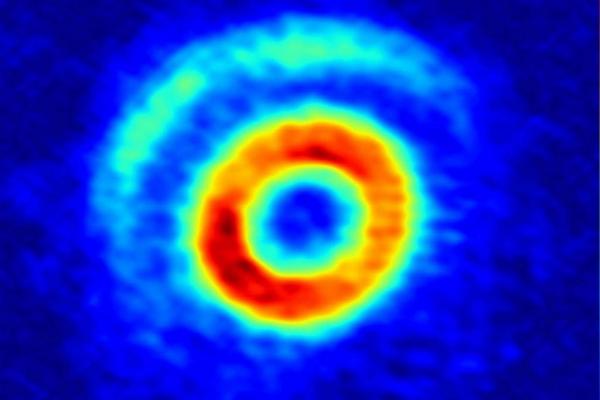
Oct. 13 (UPI) — Scientists have discovered a new explanation for how young stars and their newborn planets avoid “radial drift,” a phenomenon that can rob stellar systems of their planet-forming material.
Most planets form as material coalesces in a star’s circumstellar disk of dust and debris. But debris disks can also diffuse or be eaten up by their host star, and researchers have struggled to figure out why this doesn’t happen more often.
Gas in a circumstellar disk should exert a drag force on debris, pulling the dust inward where it is consumed by the host star. The process, called radial drift, can deplete the material a young stellar system needs to form and grow planets.
But new images of the debris disk surrounding the star V1247 Orionis has offered scientists insights into how young stars avoid radial drift.
ALMA observations revealed a thick inner disk of material and a separate outer crescent. Researchers at the University of Exeter in England believe the gap between the two concentrations of debris was carved by a newborn planet. Their analysis also suggests the planet has created a pair of high-pressure regions as it moves through the disk — like the bow of ship creates a wake as it plows through the water.
Scientists hypothesize that these high-pressure zones can trap dust and debris for millions of years, ensuring the young planet has a reservoir of materials from which to accumulate and grow.
“The exquisite resolution of ALMA allowed us to study the intricate structure of such a dust-trapping vortex for the first time,” Exeter scientist Stefan Kraus said in a news release. “The crescent in the image constitutes a dust trap that formed at the outer edge of the dark strip.”
Kraus and his colleagues published their findings this week in the Astrophysical Journal Letters.
“It also reveals regions of excess dust within the ring, possibly indicating a second dust trap that formed inside of the putative planet’s orbit,” Kraus said. “This confirms earlier computer simulations that predicted that dust traps should form both at the outer edge and inner edge of disc gaps.”
The discovery offers a new solution to the problem of radial drift predicted by most planet-formation models.






